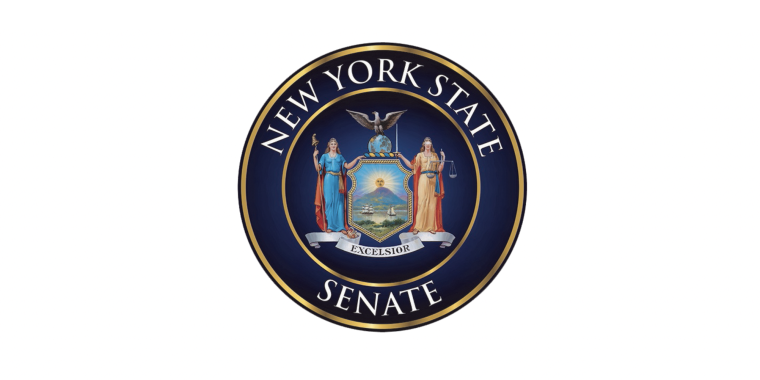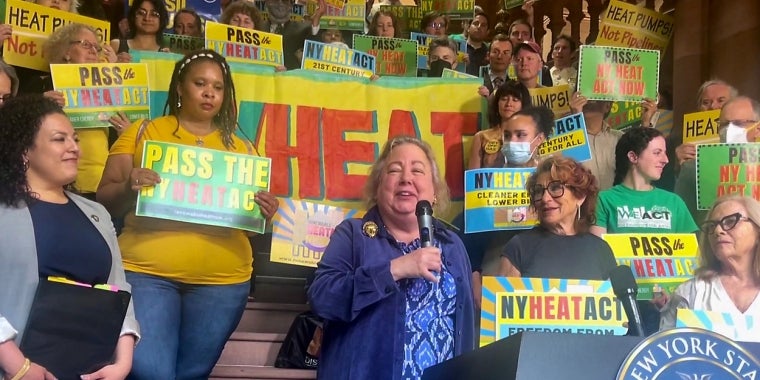
Testimony Before The New York State Board Of Elections Regarding Implementation Of The Help America Vote Act (HAVA) on July 10, 2003
Liz Krueger
July 12, 2010
Good morning, I am State Senator Liz Krueger, representing the 26thSenatorial District in Manhattan. I am here today to address a number of concerns I have regarding the Draft State Implementation Plan for the Help America Vote Act. My primary concern with the draft plan is that it is unnecessarily vague. This is particularly troubling because it limits the ability of the public to participate in a meaningful way in the decisionmaking process, and instead leaves most of the key decisions regarding HAVA implementation to the discretion of the New York State Board of Elections. This is troubling both because it violates the spirit of HAVA, and because it creates the appearance that HAVA will not be implemented through a process of meaningful public deliberation. I therefore urge the Task Force to make specific recommendations in the final draft of the State Implementation Plan, so that a real public review process can occur. I will now discuss some of the areas that should be addressed in the Draft Plan.
One of the major deficiencies in the draft plan is the lack of details as to how the voting system guidelines in HAVA will be implemented. The plan indicates that “the State Board will develop, in consultation with county election officials, strategies for the purchase and statewide implementation of new election day voting systems which are HAVA compliant,” but offers no details beyond this as to what these strategies will be, and indicates no role for the public in ensuring that the voting systems that are adopted comply with both the letter and the spirit of HAVA. The Implementation Plan should provide a detailed description as to how the criteria in HAVA will be implemented in New York State. Among the criteria that should be specifically outlined in the Implementation Plan are:
- An open, competitive bid process for selection of voting machines. In order to ensure that all New Yorkers have access to the best available technology, a single voting machine should be selected for the entire state, and there should be meaningful opportunities for public comment during the selection process.
- An explicit statement on the part of the Board of Elections supporting legislation eliminating the “full face ballot” requirement, which significantly limits New York State’s options in selecting voting machines. The full face ballot requirement currently results in confusing and disorganized ballots, and would effectively remove most state of the art voting technology from consideration by New York State.
- Greater detail as to the criteria for evaluating competing voting systems compliance with requirements for maximum accessibility for people with disabilities. The plan should specify what types of equipment will be required to improve accessibility, such as human voice audio voting, handheld voting devices, and sip and puff voting technology. The plan should also make clear that new voting technology must protect the privacy and independence of voters with disabilities. The plan should provide for ongoing participation by the disability community in the selection and evaluation of new voting technology. Finally, because HAVA does not define disability, the plan should specifically indicate that the state board will apply the broader definition of disability included in the New York State Human Rights Law to determine who is covered by the disability rights mandates of HAVA.
- A recognition that the diverse language communities of New York State require expanding language assistance beyond the minimum requirements of the Voting Rights Act. Furthermore, the plan should recognize the glaring inadequacies in current services for language minorities, including consistent problems with the provision of interpreters at pollsites, mistranslated election materials, and pollworkers who lack adequate training to assist voters with limited proficiency in English.
- A clear statement that new voting systems must be capable of producing a voter-verified paper audit trail, to ensure the maximum possible level of verifiability of electronic election counts.
- A requirement that all technology considered by the state be subject to a full review by state and independent experts. Just one breach of computer security could undermine voters’ faith in the democratic electoral process. In order to protect the integrity of the voting process, the hardware, software and source code of the state’s voting system must be subject to independent verification.
I am also concerned that the Draft Plan is not specific enough with regards to how it will minimize the effects of antidemocratic identification requirements included in HAVA. The board should establish a broad and exhaustive list of acceptable forms of identification and ensure that all board officials and election day workers are fully educated regarding these acceptable forms of identification. This is particularly important in New York City, where many people do not have driver’s licenses and other more traditional forms of identification.
The draft plan should also address flaws in New York State’s current provisional voting system. HAVA provides that voters who feel they are eligible to vote, but who are not cleared to vote by election officials, may cast a provisional vote, which will be counted according to procedures set by the state. Current New York state law governing the counting of provisional votes is impossibly stringent: provisional votes are counted only if voters are at their exact polling sites and election districts and if there are no stray marks on the envelope. The task force should recommend to the State Legislature that these unduly burdensome requirements be removed. Current provisional voting standards will disenfranchise many eligible voters simply because they are voting at the wrong polling site or election district. It imposes an unnecessary double standard on provisional voters—many of whom are immigrants or first-time voters who are unfamiliar with the administrative procedures governing elections.
Another issue of concerns is that the state’s implementation plan makes no mention of testing requirements for election workers. Statewide uniform testing will be particularly important as electronic systems replace more traditional machines. Election workers must demonstrate their proficiency with new voting systems before Election Day, in order to ensure that workers have gained sufficient knowledge to use the new voting machines.
In addition, the draft implementation plan mentions a voter bill of rights, but offers little explanation as to what rights would be included, or what public review process there would be for the voter bill of rights. Determining the details of such an important document must be an open process, and the failure to provide those details in the draft plan once again creates the likelihood that opportunities for public participation in the drafting of the voter bill of rights will be severely limited.
It is clear that much remains to be done to ensure that New York State uses the opportunities presented by HAVA to develop the best voting system possible for the state. I fear that the draft implementation plan squanders that opportunity, by avoiding many of the issues that must be addressed in order to improve our election system. I urge the Board to correct these deficiencies immediately so that there is still an opportunity for the public to have a meaningful role in this process. If the Board does not allow for such participation, they will undermine the legitimacy of the electoral process in the eyes of the voters.
I appreciate the opportunity to testify before you today.


